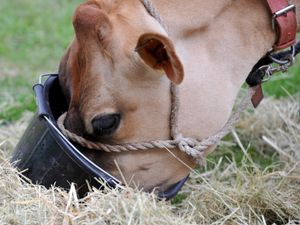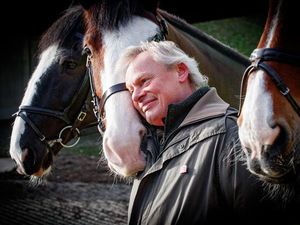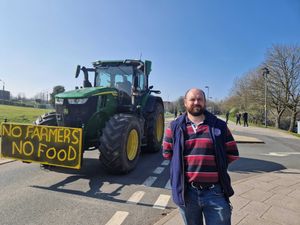Iron Age gold and silver coins find for metal detectorist
A metal detectorist who has a knack of unearthing artefacts from Shropshire's past is all smiles after discovering a gold coin dating to the Iron Age.

The Celtic corio coin turned up in a farmers' field while Andy Bassett was using his equipment to search for clues to the area's history.
He is no stranger to finding long forgotten treasures and his latest find had been lying in the ground on land near the border with Worcestershire.
The corio is believed to have been used as currency by the Dobunni Tribe and was struck in about 20B-AD5 under the authority of the Roman general Caius Marcius Coriolanus , whose story was immortalised by a William Shakespeare tragedy.
It features the image of an ear of corn with a ring at the base on one side, while a triple-tailed horse and a wheel features on the flip side.
Mr Bassett says: "We were all stunned to see it in our hands. The historical value of this kind of find is tremendous. It's 100 per cent says that the tribe was living on the land in that period.
"When you consider how many centuries it has sat in the ground and all the history. The tribe mined gold in the Welsh Marches.
"It's up to the landowner what happens to the items I find. I give talks to community groups about items .
"When I found it I beckoned the farmer across to where I was to show him. He had been ploughing a field next to the one I found the coin in and he was absolutely amazed that something like that has turned up in the ground.
"The chances are that if he had gone there before me, it may have got mangled in his machine.
"I thought I'd share this story as it's really good news and we all need cheering up after the difficult times we've had."
Mr Bassett, 54, of Rawnsley, also found a Roman silver denarius in an adjoining field which is dated to the same period as the Celtic corio coin.
"This silver coin is very special because it's a Mark Anthony legion issue and this series was supposedly struck with silver given to him by his lover Cleopatra. It demonstrates how this proves the local tribe and the Corio people were trading with Romans pre-invasion in 43bc.
"This discovery demonstrates how my finds help build local unknown history," he adds
The finds have been reported to the British Museum’s Portable Antiquities Scheme.
He has been a detectorist since his childhood and is a member of the National Council for Metal Detecting.
His previous finds have included a medieval pope’s seal along with other treasures in a ploughed field near Bridgnorth.
Peter Reavill, a Finds Liaison Officer for British Museum’s Portable Antiquities Scheme, says: "By recording finds with the British Museum’s Portable Antiquities Scheme metal detectorists are reshaping our understanding of the transition between the Iron Age and Roman periods in Shropshire. The coins that Andy has discovered on their own are beautiful examples of Iron Age craftsmanship – but when tied with other discoveries in the landscape they really do start to rewrite our shared understanding of the period.
"To understand why we need to know more about Iron Age Shropshire which is dominated by a group called the Cornovii who had a base around the Wrekin. The Cornovii did not make coins of their own but traded and met surrounding tribes who all used coins like the ones found by Andy. The new example is from the Dobunni (a tribe that dominates the South West with a tribal centre around Bristol) and is different from the previous coin reported in 2018 from a couple of fields away which was from the Corelatavi – a tribe whose centre is around Leicestershire.
"The mixing of these coins – on the edge of the Severn Valley shows that this is an active and important area in the past – added to that other Roman republican coins found nearby and you start to build up a picture that supports our thought that the Severn rather than a barrier to transport, was the modern motorway of the day. As the coins are not treasure as they were not found together in the same field they belong to the landowner and finder. They have been voluntarily recorded and so we can all share in their importance."





